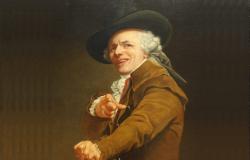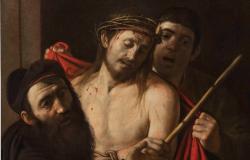The exhibition route is structured around different stories and the works are distributed in 11 rooms, with the aim of bringing visitors closer to the social, political and artistic evolution of Spain for more than four centuries, since the reign of Charles V. until the beginning of the 20th century during a relevant time of the Restoration. In this didactic desire, genres such as mythology, still life, religious painting, portrait or nude have been included, which evoke the Reserved Room that existed in the Prado Museum during its early days as a museum.
There are eight paintings from the 16th century, among which the Mona Lisa, dated 1507-1516, an oil on panel from Leonardo da Vinci’s workshop, which is exhibited together with a drawing by Juan Antonio del Canto, from the late 18th century, and two photographs from 1871 and 1915, which help to better understand this work. And also The money changer and his wife (1539) by Marinus van Reymeswaele; Venus recreating with Love and Music (ca. 1555) by Titian; a portrait of Juan Sánchez Cotán, Brígida del Río, the Barbuda of Peñaranda (1590); Isabella of Valois holding a portrait of Philip II (1561-1565), an oil painting by Sofonisba Anguissola; a pair of panels by Juan de Flandes; he Sacrifice of Isaac of Veronese; and The Temptations of Saint Anthony Abbot from a follower of Hieronymus Hieronymus, dated around 1550-1560.
The 17th century, the central core of the selection of paintings, is one of the best represented with more than thirty oil paintings by masters such as El Greco, with that Portrait of a young gentleman (1600-1605) and Christ embracing the cross (1602); four compositions by Velázquez with that portrait of Philip IV, hunter (1632-1634), The fountain of the Tritons in the Garden of the Island of Aranjuez (1657) and its endearing dwarf with a dog (ca.1645) and The Pumpkin Jester (1635-1639); the versatility of Rubens and his workshop in Mercury (1636-1638), Fortune (1636-1638), Diana Huntress (1617-1620) or The Abduction of Hipadamia (1636-1637); a couple of zurbarans; Murillo, Ribera, Jacques Jordaens, to name the most relevant.
And from the 18th and 19th centuries with some examples from the 20th, by Sorolla and a landscape by Beruete, it is worth highlighting eight works by Francisco de Goya: Charles IV (ca.1789), Cardinal Don Luis María de Borbón y Vallabriga (ca.1802), Sun visor (1777), the portrait of Francisco de Bayeu (1795) and scenes such as The hermitage of San Isidro on the day of the festival, The bullfight (1780) or those boys picking fruit (1778).
And also oil paintings by Jean Ranc such as The family of Philip V (ca.1723); he portrait of Amalia of Saxony (ca. 1761) by José del Castillo and Anton Rafael Mengs; an oil painting by Antonio Carnicero; the portrait of Sabina Seuphan Spalding that Federico de Madrazo made of her in 1846; two compositions by Lucas Velázquez; he Naked on Portici beach (1874) by Mariano Fortuny; and the light that emanates from the Mouth of the Bidasoa (1872), which Martín Rico captured with his palette.






